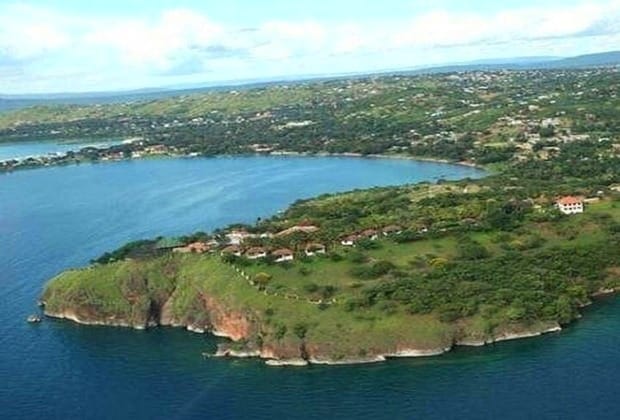How to Plan a Multi-Country African Safari: Crossing Borders for the Ultimate Experience
Embarking on a multi-country African safari is the pinnacle of adventure travel, offering an unparalleled opportunity to explore the continent’s diverse landscapes, rich wildlife, and vibrant cultures. By crossing borders and immersing yourself in multiple countries, you can experience the best that Africa has to offer, from the vast Serengeti plains of Tanzania to the iconic wildlife of Kenya, the breathtaking vistas of South Africa, and beyond. Planning a multi-country safari requires careful consideration and meticulous organization to ensure a seamless and unforgettable journey. Join Future African Safari as we guide you through the essential steps to plan your ultimate multi-country African safari. Why Choose a Multi-Country Safari? A multi-country safari provides a comprehensive and diverse experience, allowing travelers to witness a broader spectrum of Africa’s natural and cultural wonders. Diverse Wildlife and Landscapes: Each African country boasts unique ecosystems and wildlife. A multi-country safari enables you to see a wider variety of animals and landscapes, from the savannahs and deserts to rainforests and coastal regions. Cultural Enrichment: Experience the rich cultural diversity of Africa by interacting with different ethnic groups, learning about their traditions, and exploring historical sites across various nations. Comprehensive Adventure: Combining multiple destinations offers a more extensive adventure, with varied activities such as game drives, hiking, beach relaxation, and cultural tours. Maximized Value: Multi-country safaris often provide better value for money, allowing you to make the most of your time and budget by visiting multiple prime locations within a single trip. Top Destinations to Include in Your Multi-Country Safari Selecting the right combination of countries is crucial for maximizing your safari experience. Here are some of the top African destinations to consider: 1. Kenya Kenya is renowned for its exceptional wildlife reserves and vibrant culture. Maasai Mara National Reserve: Famous for the Great Migration and abundant big cats. Amboseli National Park: Offers stunning views of Mount Kilimanjaro and large elephant herds. Lake Nakuru National Park: Known for its flamingos and diverse birdlife. 2. Tanzania Tanzania is home to some of Africa’s most iconic national parks and natural wonders. Serengeti National Park: Witness the Great Migration and diverse wildlife. Ngorongoro Crater: A UNESCO World Heritage site with a high density of wildlife. Zanzibar: Combine safari adventures with beach relaxation and cultural exploration. 3. South Africa South Africa offers a mix of wildlife, scenic beauty, and urban experiences. Kruger National Park: One of Africa’s largest game reserves with diverse wildlife. Sabi Sand Game Reserve: Known for luxury lodges and exceptional leopard sightings. Garden Route: Explore stunning coastal landscapes, forests, and charming towns. 4. Namibia Namibia’s unique desert landscapes provide a stark contrast to lush savannahs. Etosha National Park: Exceptional game viewing around salt pans. Sossusvlei: Iconic red sand dunes and stunning desert scenery. Swakopmund: A coastal town offering adventure activities and German colonial architecture. 5. Botswana Botswana is celebrated for its pristine wilderness and sustainable tourism practices. Okavango Delta: A unique inland delta teeming with wildlife. Chobe National Park: Renowned for its large elephant populations. Moremi Game Reserve: Offers diverse ecosystems and abundant wildlife. Planning Logistics for a Multi-Country Safari Successful planning involves coordinating various logistical aspects to ensure a smooth and enjoyable trip. 1. Itinerary Design Duration: Determine the length of your safari based on the number of countries and key attractions you wish to visit. Route: Plan a logical route that minimizes backtracking and optimizes travel time between destinations. Pacing: Balance game viewing days with rest days to prevent fatigue and allow time for exploration. 2. Visa and Entry Requirements Research Visa Policies: Each country has its own visa requirements. Check the latest regulations for the countries you plan to visit. Visa on Arrival vs. Pre-Arranged Visas: Some countries offer visas on arrival, while others require pre-arranged visas. Plan accordingly to avoid delays. Transit Visas: If you have layovers or transits between countries, ensure you have the necessary transit visas. 3. Health and Safety Precautions Vaccinations: Consult with a travel health specialist to receive recommended vaccinations and malaria prophylaxis for the countries you’ll visit. Travel Insurance: Obtain comprehensive travel insurance that covers medical emergencies, trip cancellations, and other unforeseen events. Local Health Regulations: Stay informed about health regulations and entry requirements related to COVID-19 or other health concerns. 4. Transportation Options Flights: Book regional flights to cover long distances between countries efficiently. Road Travel: Consider renting a 4×4 vehicle for flexibility and the ability to explore remote areas. Internal Transfers: Arrange internal transfers through your safari provider to ensure seamless connections between destinations. 5. Accommodation Planning Variety of Lodging: Choose a mix of luxury lodges, tented camps, and budget-friendly accommodations to suit your preferences and budget. Proximity to Parks: Select accommodations close to national parks and reserves for optimal game viewing opportunities. Sustainable Options: Opt for eco-friendly lodges that prioritize sustainability and support local communities. Timing and Seasons Understanding the best times to visit each destination is crucial for maximizing wildlife sightings and enjoying favorable weather conditions. Dry Season (June to October): Ideal for game viewing as animals congregate around water sources and vegetation is sparse. Wet Season (November to May): Offers lush landscapes, vibrant birdlife, and fewer tourists. The Great Migration occurs during this period. Regional Variations: Each country has its own seasonal patterns. For example, the dry season in Kenya and Tanzania is opposite to that in Botswana and Namibia. Budgeting for a Multi-Country Safari A multi-country safari can vary widely in cost based on several factors. Here’s how to budget effectively: Duration: Longer safaris will naturally cost more due to additional accommodations, meals, and activities. Accommodation Level: Luxury lodges are more expensive than mid-range or budget options. Decide on the level of comfort you desire. Transportation: Internal flights and private transfers add to the cost. Group tours can be more cost-effective. Activities: Specialized activities like hot air ballooning, guided walks, and cultural tours may incur additional fees. Travel Insurance: Ensure your budget includes comprehensive travel insurance for peace of mind. Activities and Experiences A multi-country safari offers a plethora of activities beyond
How to Plan a Multi-Country African Safari: Crossing Borders for the Ultimate Experience Read More »











